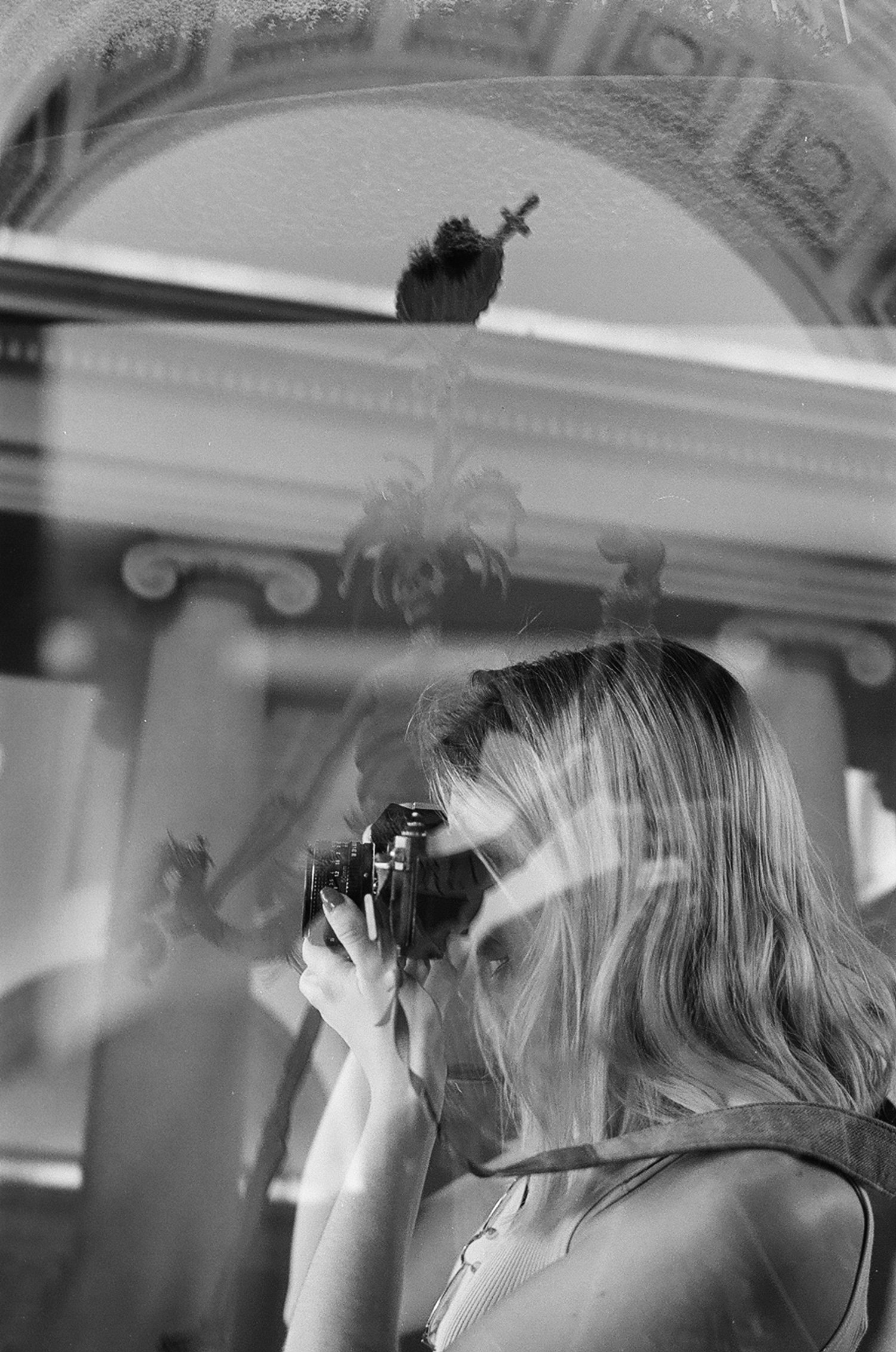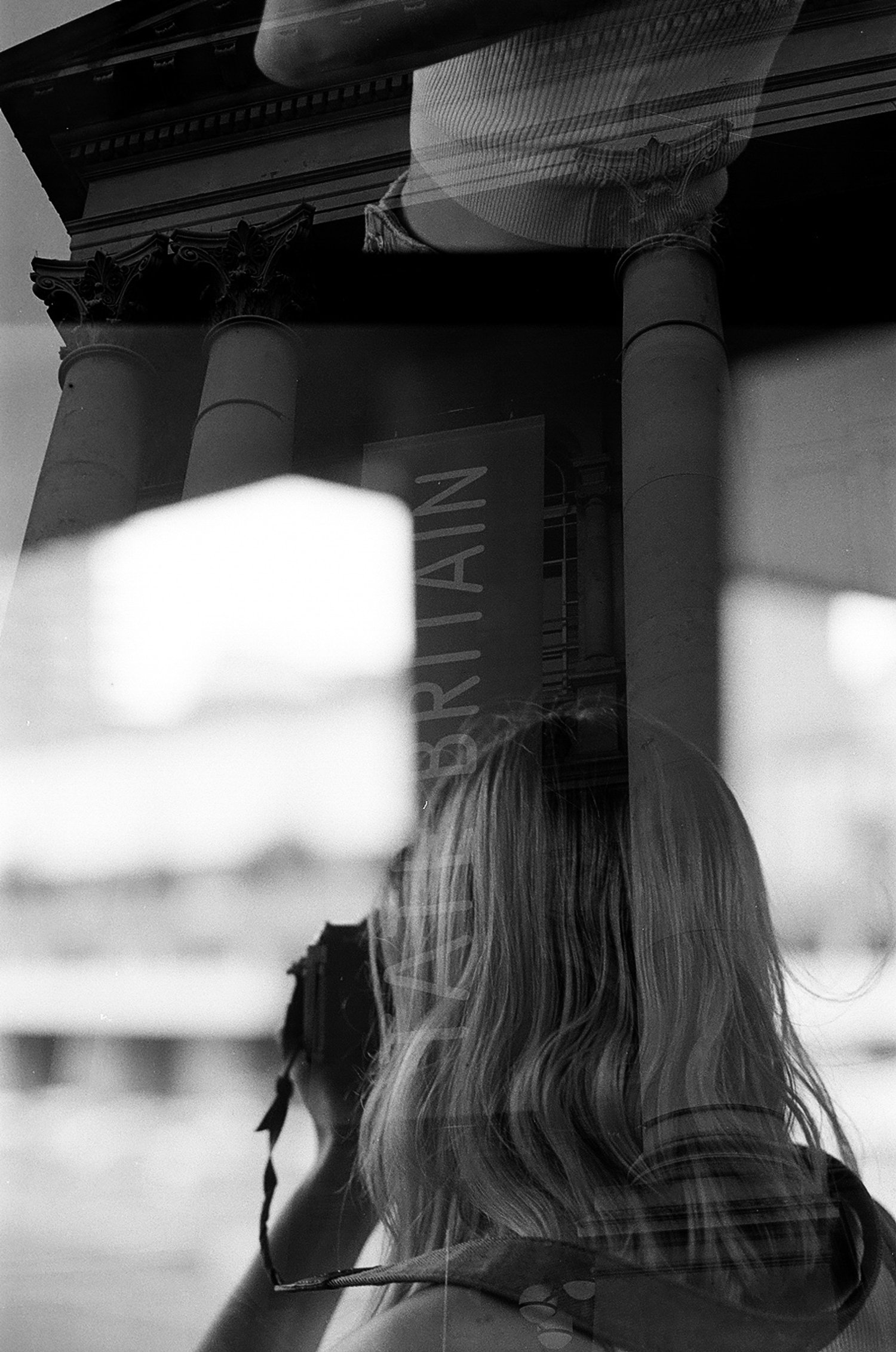The Female Gaze PART 2 - "To-be-looked-at-ness"
NOTE: Most of this blog is based on Hollywood films but I believe that the British FIlm industry is not untouched by these issues.
On Friday night I went to the BFI London to watch a documentary about The Female Gaze. This is a topic that I love talking about, have written about previously and after this viewing, believe that it’s something we all need to be aware of and awake to. I came home to a rigorous and deep talk with my husband who is a cinematographer and discussed the content at length and that conversation in turn inspired me to write this for you.
Brainwashed: Sex-Camera-Power by Nina Menkes is a deep dive analysis into the subject/object in Hollywood movies and curates a huge range of film examples (about 175!) from 1896 - 2020 that adhere to specific camera techniques and tools that on the surface seem creative choices but on deeper dissection reveal and reflect the disempowerment of women via male directors, cinematographers, distributors and agents that perpetuate only one perspective. But how exactly do they do this?
“Although sometimes described as the “male gaze”, Mulvey’s concept is more accurately described as a heterosexual, masculine gaze. Visual media that respond to masculine voyeurism tends to sexualise women for a male viewer. As Mulvey wrote, women are characterised by their “to-be-looked-at-ness” in cinema”
THE CAMERA
The documentary suggests that there are camera choices that are so common it’s almost like there is a handbook to follow! Slow motion movement, silenced females, camera pan along the whole body, fragmentation of the female body, flat 2D lighting and backdrops that feel ethereal and out of context of the scene. Of course none of these things are inherently offensive are they? But when they are repeatedly shown on our screen, hundreds if not thousands of times, then it permeates our collective conscious and we are tricked into believing what a women should be. Conjure up the first scenes of Lost in Translation - the first time we meet Bill Murray he is out on the streets of Tokyo looking sullen and in deep thought. When we first meet Scarlett Johansson we scan over her bottom, seeing her laying on a bed with a soft focus background and we linger on this. We never see her face. We are setting the tone for the narrative here and what is that narrative really saying? This is one of the most shocking examples for me as this is conducted and devised by a female director!
THE FILM INDUSTRY
There is a huge gender imbalance in the industry too. At film school apparently there is 50/50 across the genders entering film schools and yet still we are seeing 94% to be still male dominated. Even Laura Mulvey, the British film critic who coined the phrase The Male Gaze in the 70s (and is in the film!) is completed shocked that this percentage hasn’t shifted more in favour of women in the last 20 years as she predicted it would. It seems that there is a huge male dominance prevalent, Hollywood was built on it and that power cannot be let go of easily.
BEYOND THE SCREEN
The soundtrack to the documentary is ominous, the pulsating strings giving a sense of foreboding (think Hitchcock movies here). And the documentary starts to consider how this viewing of the female form through the male gaze is both created by and then perpetuating sexual harassment and abuse in our society. It’s a bold claim but backed up by myriad examples, displacing a sickly feeling in the pit of your stomach. The way sex scenes are played out, the way women rarely dictate the next move in the narrative and the way they ALWAYS come round to desire after persistent urging from the male are a very one-sided approach to an act that requires two fully consenting people.
Women throughout history have be persecuted from having opinions and a voice and this is something that became highlighted in the Me Too movement as being something reflective of the Hollywood film industry. Actresses in the documentary talk of how what was previously arranged by managers and agents would suddenly change on set and whole new explicit idea would be expected and it was too hard to then say no in front of all the crew staring at them. In Blue is the Warmest Colour Léa Seydoux says she felt like a prostitute after days upon days of vigorous sex scene filming and yet could not speak up at the time to express her feelings without fear of being judged, shamed or at worst losing her job.
Christina Ricci had a novel approach to this where she remained naked when cut was called to make the whole crew feel uncomfortable. She walked around with no clothes on, turning the tables on her discomfort by making everyone else feel uncomfortable and this felt empowering to her. You can read about it here. I’ve heard stories of other actresses that demanded the whole crew was naked if she was going to be - something that was agreed and happened! Am loving the creativity here and I guess extreme situations call for extreme measures…
The whole documentary was a sad realisation for me. These scenes we have watched for years have deeply affected how we see ourselves as women. As a young girlI have acted in my life because of how men have portrayed other females on screen. I found myself surprising emotional as I watched and realised this. The effects have gone that deep and the time has come to re-address this imbalance.
AND BREATHE
(Well done for reading this far 👏). There is respite towards the end of the documentary you’ll be glad to know. My craving to show what alternatives are possible for film was satisfied as we start to consider alternative camera framing, interaction between the sexes, different object/subject gaze and even explicit acknowledging that the gaze exists. There is a beautiful scene in A Portrait of a Women on Fire (which is a gorgeous film that you must see about a female portrait artist in the 18th century) where the subject reminds the painter that she is sitting there looking right back at her and this is something that female filmmakers have used when beginning to address what a female gaze might look like…
“The first feminist gesture is to say: “OK, they’re looking at me. But I’m looking back at you. ”
What is exciting is that the call to creativity, to be aware of the stereotypes that women don’t want to see about themselves anymore and then generate new ways of showing the same narrative in a more empowering way is within our reach. And is already happening! The film industry as a whole will grow and flourish when this happens. As I’ve written before in my previous blog about the female gaze, that we are only hearing half the orchestra playing with females voices and perspectives. And in fact we haven’t even begun to look at how black and queer bodies are under the same white, heterosexual male gaze. (Although Brainwashed does reference the scene in Silence of the Lambs when the killer is hunted down and killed only when he was in drag, contributing to a lot of trauma in the Trans community).
FINAL THOUGHTS AND WHAT NEXT?
The documentary discusses these themes with great efficieny and detail, but there us a lot more to say and more stories to be told. And if you are in doubt why this is important, you just have to read the male reviewers on IMDb to see why! It’s important that all voices are heard, not just the dominant ones, and we need to have the humility and empathy to understand that someone else’s point of view and the right to be heard is not an attack on us personally.
This elevating of unheard voices and untold stories is the heart of my work and I know that viewing this documentary isn’t only changing how I look at films but how I live my whole life.
What next?
✨
What next? ✨
This content has probably made you think but What can I do? So here are some suggestions - let me know how you get on and what else it presses on you to do:
Firstly, go watch the film if you haven’t seen it yet. Here’s all the info you need. It’s on across the country but only for a short time.
Seek out female writers, directors, DOPs and share these films with your thoughts about them on social media.
If you’re in the industry go follow Lady Camera Guy on Instagram and check out Cinegirl magazine
Start these discussions with friends and family when it arises or when film content stirs something within you.
Be conscious and mindful with the films you watch and how they are affecting you. Even journal about it if there is triggering content.
Talk to your kids about The Trick. Huge thanks to Lauren Currie here on cultivating language to help our children notice and understand how subtle the patriarchy already affects young children. (Yes boys can like pink and they can have long hair too!)
Comment below or send me a message on Instagram.
JOIN MY FIRST FILM CLUB MEET-UP!!! We meet on zoom and the first meeting is on Tuesday 6th June at 8pm. We’ll meet on the first Tuesday of every month and discuss various female filmmakers and use a simple framework to consider our thoughts in relation to ourselves and the world around us. If you want to join just send me a message via instagram or my contact form.
I am really excited to hear your feedback and how this all makes you feel. I love that we are hearing voices that have historically been shamed into silence. I honestly think that our culture will become richer as a result once we start to listen.
Donna x
Note: All photos and collages belong to me and are not to be used without permission.







